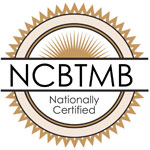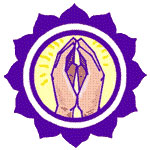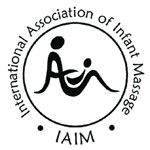Integrative Therapeutic Massage
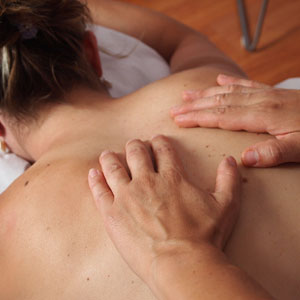 Massage is one of the oldest healing arts. Chinese records dating back 3,000 years document its use; the ancient Hindus, Persians and Egyptians applied forms of massage for many ailments; and, Hippocrates wrote papers recommending the use of rubbing and friction for joint and circulatory problems.
Massage is one of the oldest healing arts. Chinese records dating back 3,000 years document its use; the ancient Hindus, Persians and Egyptians applied forms of massage for many ailments; and, Hippocrates wrote papers recommending the use of rubbing and friction for joint and circulatory problems.
Today, the benefits of massage are varied and far-reaching. As an accepted part of many physical rehabilitation programs, massage therapy has also proven beneficial for many chronic conditions, including low back pain, arthritis, bursitis, fatigue, high blood pressure, diabetes, immunity suppression, infertility, smoking cessation, depression, and more. And, as many millions will attest, massage also helps relieve the stress and tension of everyday living that can lead to disease and illness.
Swedish Massage
Swedish massage is the style that comes to mind when most people think about massage. It was developed in Stockholm a couple of centuries ago, and is the most common and best-known form of bodywork performed today. The goal is relaxing the entire body by massaging the muscles with long gliding strokes in the direction of blood returning to the heart. Additional techniques include circular pressure applied by the hands and palms, firm kneading, percussion-like tapping, bending and stretching. Oil or lotion is often used to reduce friction and stimulate the skin.
Swedish massage is exceptional for increasing the level of oxygen in the blood, decreasing muscle toxins, and improving circulation and flexibility while easing tension.
Myofascial Release
Myofascial Release is a form of bodywork that seeks to rebalance the body by releasing tension in the fascia. Long, stretching strokes are utilized to release muscular tension. Myofascial Release is a manual therapy technique that is utilized to help relieve pain and tension that is due to injury or stress. It involves releasing and unwinding the fascia (connective tissue) that surrounds each muscle and interconnects all of the other internal parts of the body. This tissue layer, which connects every muscle, tendon, ligament, bone, and organ in our bodies, can store memories of physical trauma. Releasing these restrictions allows us to discharge recurring emotional as well as physical pain.
Cannabis Hemp CBD Massage
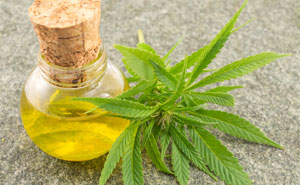 Cannabis is one of the world’s oldest and most treasured natural resources, proven safe and effective by millions of consumers around the world across many thousands of years. The cannabis plant features dozens of cannabinoids such as THC and CBD which interact with the body’s endocannabinoid system to produce a wide range of noted anti-inflammatory, anti-convulsant, antiviral, antiemetic, antitumoral and antioxidant benefits. In fact, from 1850 to 1937 the U.S. Pharmacopeia listed cannabis as the primary active ingredient in treating more than 100 separate illnesses and diseases.
Cannabis is one of the world’s oldest and most treasured natural resources, proven safe and effective by millions of consumers around the world across many thousands of years. The cannabis plant features dozens of cannabinoids such as THC and CBD which interact with the body’s endocannabinoid system to produce a wide range of noted anti-inflammatory, anti-convulsant, antiviral, antiemetic, antitumoral and antioxidant benefits. In fact, from 1850 to 1937 the U.S. Pharmacopeia listed cannabis as the primary active ingredient in treating more than 100 separate illnesses and diseases.
While there are many ways to deliver the powerful healing properties of cannabis, one of the easiest and safest ways is topically through oils, creams and lotions that have been infused with pure whole-plant cannabis extracts. Although cannabis oils aren’t absorbed into the bloodstream as with ingesting or inhalation, they’re still incredibly effective in drawing the beneficial cannabinoids into the cells. Cannabis may also greatly improve the quality of the skin when used topically. It may improve elasticity, help eliminate acne, and increase the blood flow to the skin which allows for faster healing of cuts and scrapes.
Because of these unique properties, cannabis is ideally suited as a companion for massage. By reducing pain, inflammation and anxiety, the body reaches deeper states of relaxation allowing for looser muscles and deeper massage. Osteopath Dustin Sulak, D.O., operates a large New England clinic where he and colleagues have treated more than 18,000 patients with cannabis. In a 2015 interview with MASSAGE Magazine he noted there have been “numerous reports of topical cannabinoids working wonders for arthritic joints, tender points, muscle spasms, phantom limb pain, peripheral neuropathy and inflammatory skin conditions—and we almost never hear any reports of adverse effects associated with its use.”
Inner Source’s therapeutic Cannabis Hemp CBD Massage exclusively features the cannabinoid CBD in powerful compounds with numerous therapeutic qualities and virtually zero psychoactive THC. As such, our Cannabis Hemp CBD Massage is generally suitable for people of all legal ages, lifestyles, and massage needs.
Need more info? See our Cannabis Hemp CBD FAQ
As always, consult your physician before beginning any supplements or botanical extracts. Cannabis is near universally regarded as safe and effective. However, there’s always exceptions. From a recent article at Project CBD, “Cannabidiol (CBD) is a safe, non-intoxicating, and non-addictive cannabis compound with significant therapeutic attributes, but CBD-drug interactions may be problematic in some cases. Drug interactions are especially important to consider when using life-saving or sense-saving drugs, drugs with narrow therapeutic windows, or medications with major adverse side effects.”
NOTE: Virtually all CBD products contain a nominal amount of THC as recognized by state and federal law. If you’re concerned with drug testing, please proceed with an abundance of caution.
Trigger Point Therapy
A trigger point is a tight area within muscle tissue that causes pain in other parts of the body. A trigger point in the back, for example, may reduce referral pain in the neck. The neck, now acting as a satellite trigger point, may then cause pain in the head. The pain may be sharp and intense or a dull ache.
Trigger point massage therapy is specifically designed to alleviate the source of the pain through cycles of isolated pressure and release. In this type of massage for trigger point therapy, the recipient actively participates through deep breathing as well as identifying the exact location and intensity of the discomfort.
The results and benefits of trigger point massage are releasing constricted areas in the muscles thus alleviating pain. You can experience a significant decrease in pain after just one treatment. Receiving massage with trigger point therapy on a regular basis can help naturally manage pain and stress from chronic injuries.
Deep Tissue Massage
Deep Tissue Massage, as its name says, focuses on the deeper layers of muscle tissue. It is designed to reach the deep sections of thick muscles, specifically the individual muscle fibers.
Using deep muscle compression and friction along the grain of the muscle, the purpose of Deep Tissue Massage is to unstick the fibers of the muscles and release both toxins and deeply held tension points. Specific hand positions and strokes are used to respond to various tissues while breath and movement techniques are employed to release muscular congestion. It helps to loosen muscle tissues, release toxins from muscles and get blood and oxygen circulating properly. It is both corrective and therapeutic. It is beneficial for many physical problems, including sports injuries and chronic pain. Because it works very deeply, emotional issues can also be addressed, when these have been stored in the body.
Deep Tissue Massage usually focuses on specific areas and may cause some soreness during or after the session, however, you should feel better within a day or two. Water helps to eliminate toxins from the body so it is important to drink plenty of water after a Deep Tissue Massage to help this process along. Emily also recommends Epsom salt baths to help relieve muscles and aid in the detoxification that happens after deep tissue bodywork.
Aromatherapy Massage
Aromatherapy is a wonderful way to deepen the massage experience. Massage alone has numerous health benefits but when combined with aromatherapy, massage takes on a remarkable synergy that dramatically enhances the massage session.
Essential oils are comprised of the naturally occurring chemical constituents found in the botanical matter that they are distilled from such as leaves, petals, stems and seeds. Essential oils have many healing properties and are utilized by the body through both the skin and inhalation. When you smell essential oils, your limbic system which governs our emotions and endocrine system, is immediately affected. This is why aromatherapy is often connected with emotional work.
For more information about aromatherapy, please click here or look at our class calendar for upcoming aromatherapy classes.



